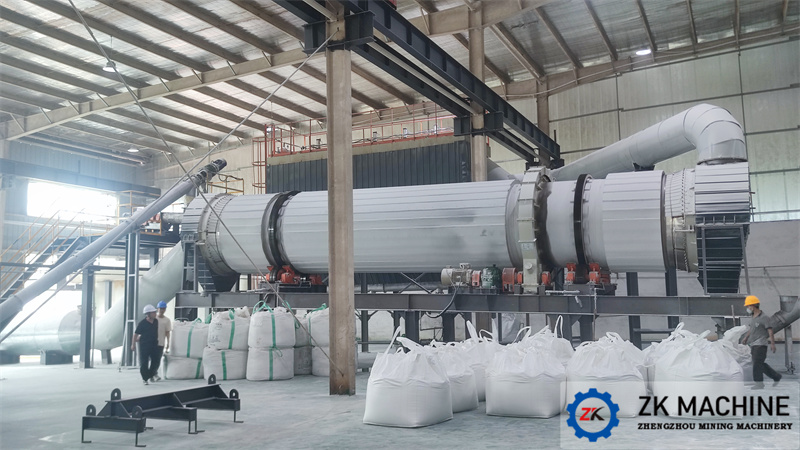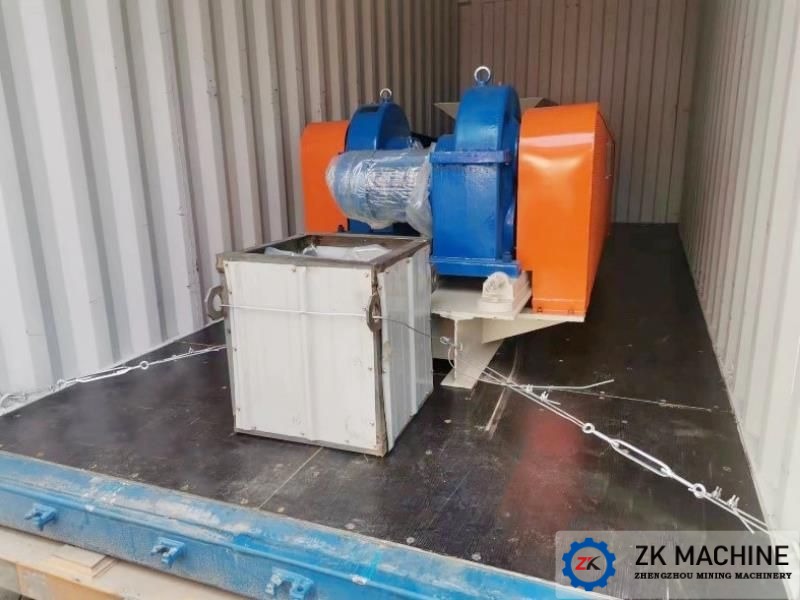Cement Production Method
To put it simply, the production process of cement is two grinding and one firing, that is, the raw materials must be excavated, crushed, ground and mixed to make raw materials. The raw materials are burned to mature material at a high temperature of 1450~C, and the clinker is crushed. It is ground into cement together with gypsum or other mixed materials. Due to the difference between dry and wet raw meal preparation, the production methods are divided into three types: wet method, semi-dry method or semi-wet method, and dry method.
Characteristics of wet production
The raw material is made into a slurry with a water content of 32% to 36%. The raw material slurry is dried in a rotary kiln and the mature material is burned. The wet preparation of slurry has low grinding energy consumption, about 30% lower, the slurry is easy to mix, and the raw meal composition is stable, which is beneficial to burning high-quality clinker. However, the steel consumption of the easy-grinding parts of the ball mill is large. The unit heat consumption of the clinker of the rotary kiln is 2093~2931KT/kg (500-700kcal/kg) higher than that of the dry process kiln. The temperature of the clinker exiting the kiln is relatively low, so it is not suitable to burn high silicic acid rate. And clinker with high alumina oxygen rate.
Characteristics of semi-dry production
Adding 10%-15% water to dry raw meal powder is made into pellets and calcined in a kiln. It is called semi-dry method. Rotary kilns with grate heaters are also called Liboer kilns and vertical kilns. In foreign countries, there is also a mechanical method that presses and dewaters the slurry prepared by the wet method to make a mud section with a water content of about 19% and then enters the Liboer kiln for calcination, which is called semi-wet production. The moisture content of the material entering the kiln by the semi-dry method is reduced, and the unit heat consumption of the clinker of the kiln can also be reduced by 837~1675kJ/kg (200~400kcal/kg) compared with the wet method. Because the grate heater is used to replace part of the rotary kiln to dry the pellets, the efficiency is higher, and the rotary kiln can be shortened. For example, the output per unit volume of the kiln can be increased by 2-3 times. However, the semi-dry method requires that the raw meal should have a certain degree of plasticity in order to form a pellet, which limits its application. There are many mechanical failures of the heating machine. In my country, the calcination temperature is generally low, and it is not suitable to burn high-quality clinker.
Features of dry production
The dry method is to send raw meal powder directly into the kiln for calcination. The moisture content of the raw meal into the kiln is generally only 1% to 2%, which saves a lot of heat required for drying the raw meal. The previous dry-process production used a hollow rotary kiln, and the heat transfer efficiency in the kiln was low, especially in the decomposition zone with high heat consumption, the heat energy was not fully utilized, so that the thermal efficiency of the dry-process hollow kiln did not improve much. Raw meal powder prepared by dry method is not easy to mix uniformly, which affects the quality of clinker. Therefore, wet production used to dominate in the 1940s and 50s. In the 1950s, raw meal powder air mixing technology and suspension preheating technology appeared. In the early 1970s, pre-decomposition technology, raw material pre-homogenization and raw meal quality control technology were born. Now dry production can produce raw meal of uniform quality. The new type of precalcining kiln has moved the preheating and carbonate decomposition of raw meal powder to the outside of the kiln in a suspended state. The thermal efficiency is high and the rotary kiln is reduced. Not only does the low heat consumption increase the thermal efficiency of the rotary kiln from about 30% of the wet process kiln to more than 60%, but also the kiln's production capacity can be expanded.




